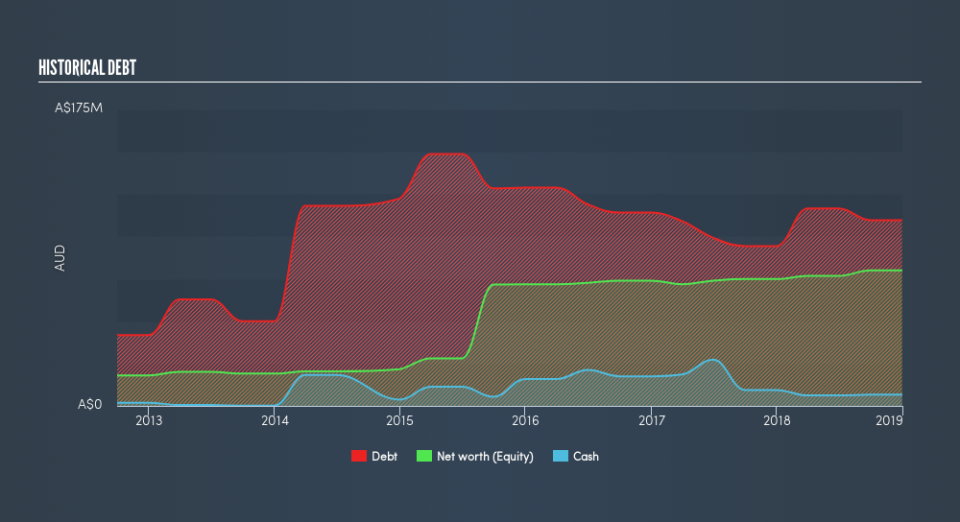Are Dicker Data Limited's (ASX:DDR) Interest Costs Too High?

Want to participate in a short research study? Help shape the future of investing tools and you could win a $250 gift card!
Dicker Data Limited (ASX:DDR) is a small-cap stock with a market capitalization of AU$935m. While investors primarily focus on the growth potential and competitive landscape of the small-cap companies, they end up ignoring a key aspect, which could be the biggest threat to its existence: its financial health. Why is it important? Assessing first and foremost the financial health is crucial, as mismanagement of capital can lead to bankruptcies, which occur at a higher rate for small-caps. The following basic checks can help you get a picture of the company's balance sheet strength. However, potential investors would need to take a closer look, and I suggest you dig deeper yourself into DDR here.
DDR’s Debt (And Cash Flows)
DDR has built up its total debt levels in the last twelve months, from AU$94m to AU$110m , which includes long-term debt. With this increase in debt, the current cash and short-term investment levels stands at AU$6.6m , ready to be used for running the business. Moreover, DDR has generated AU$12m in operating cash flow over the same time period, leading to an operating cash to total debt ratio of 11%, signalling that DDR’s operating cash is less than its debt.
Can DDR meet its short-term obligations with the cash in hand?
With current liabilities at AU$303m, it seems that the business has been able to meet these commitments with a current assets level of AU$351m, leading to a 1.16x current account ratio. The current ratio is calculated by dividing current assets by current liabilities. For Electronic companies, this ratio is within a sensible range as there's enough of a cash buffer without holding too much capital in low return investments.
Is DDR’s debt level acceptable?
With total debt exceeding equity, DDR is considered a highly levered company. This is a bit unusual for a small-cap stock, since they generally have a harder time borrowing than large more established companies. No matter how high the company’s debt, if it can easily cover the interest payments, it’s considered to be efficient with its use of excess leverage. A company generating earnings before interest and tax (EBIT) at least three times its net interest payments is considered financially sound. In DDR's case, the ratio of 9.53x suggests that interest is appropriately covered, which means that debtors may be willing to loan the company more money, giving DDR ample headroom to grow its debt facilities.
Next Steps:
Although DDR’s debt level is towards the higher end of the spectrum, its cash flow coverage seems adequate to meet obligations which means its debt is being efficiently utilised. Since there is also no concerns around DDR's liquidity needs, this may be its optimal capital structure for the time being. Keep in mind I haven't considered other factors such as how DDR has been performing in the past. I suggest you continue to research Dicker Data to get a more holistic view of the small-cap by looking at:
Future Outlook: What are well-informed industry analysts predicting for DDR’s future growth? Take a look at our free research report of analyst consensus for DDR’s outlook.
Valuation: What is DDR worth today? Is the stock undervalued, even when its growth outlook is factored into its intrinsic value? The intrinsic value infographic in our free research report helps visualize whether DDR is currently mispriced by the market.
Other High-Performing Stocks: Are there other stocks that provide better prospects with proven track records? Explore our free list of these great stocks here.
We aim to bring you long-term focused research analysis driven by fundamental data. Note that our analysis may not factor in the latest price-sensitive company announcements or qualitative material.
If you spot an error that warrants correction, please contact the editor at editorial-team@simplywallst.com. This article by Simply Wall St is general in nature. It does not constitute a recommendation to buy or sell any stock, and does not take account of your objectives, or your financial situation. Simply Wall St has no position in the stocks mentioned. Thank you for reading.

